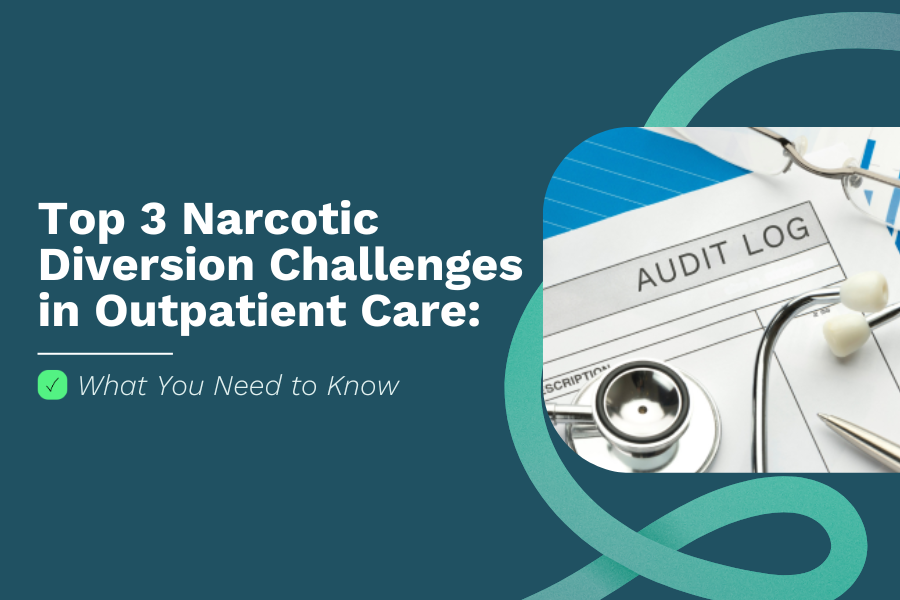Top 3 Narcotic Diversion Challenges in Outpatient Care: What You Need to Know
In outpatient care, narcotic diversion is more than a legal risk. It is a patient safety crisis. The stakes are high, the consequences are lasting, and the solutions require more than good intentions. While every facility knows diversion is a threat, too many still face the same preventable issues.
Three challenges stand out. In today’s regulatory and reputational climate, there are zero excuses for ignoring them.
1. Manual, Error-Prone Medication Tracking
Paper logs and spreadsheets leave too much room for error and make it easier for diversion to go unnoticed. Missing entries, illegible handwriting, and inconsistent record-keeping make it difficult to detect problems before they escalate.
A medication tracking system changes that. By automatically recording every transaction, tracking user access, and linking each action to a verified staff member, you eliminate blind spots that diversion can hide behind. Real-time reporting also allows you to catch discrepancies the moment they happen, not weeks later when the damage is already done.
If you cannot verify every narcotic’s path from receipt to administration instantly, you are not in control of your inventory.
2. Insecure Storage That Invites Risk
Leaving controlled substances in unlocked cabinets or relying on outdated lock-and-key systems makes it easy for medications to disappear without a trace. Diversion is often internal, carried out by individuals with authorized access who know your weak points.
A lockable medicine box with digital access control provides both security and accountability. The best systems require unique credentials for every user, record every open and close, and can send alerts if something is wrong. This acts as a strong safeguard against theft while creating a complete, detailed audit trail.
If your storage system cannot tell you exactly who accessed which medication and when, you are leaving the door open to diversion.
3. Gaps in Documentation for Audits and Compliance \
The DEA, state boards, and regulatory bodies expect complete, accurate, and timely narcotic records. Without them, you are vulnerable to penalties, inspections, and reputational harm. Many facilities still scramble when an inspection happens because their medication inventory log is incomplete or spread across multiple systems.
Audit and compliance software solves this by consolidating all your data into one searchable platform. From automatic log entries to customizable reports, it ensures you are ready for an inspection at any moment. No more gathering paperwork from multiple sources or relying on staff memory.
If your inspection readiness depends on a cleanup before surveyors arrive, you are already too late.
From Challenge to Solution
Diversion is preventable, but only if you address these three challenges directly. A powerful medication tracking system, secure lockable medicine box, and reliable audit and compliance software are essential for medication safety and for protecting your patients, staff, and license.
MedServe delivers all three in one streamlined solution designed for outpatient care. Automated logs, secure digital storage, and instant reporting keep you inspection ready and in control year-round.
Three challenges. Zero excuses. Are you ready to solve them?
Let’s talk about closing your gaps before they become costly problems.

